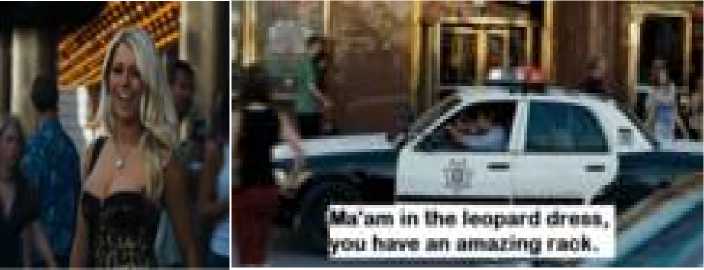PSYCHOLOGICAL ANALYSIS OF MAIN AND SECONDARY CHARACTERS IN MOVIE THE HANGOVER
on
ISSN: 2302-920X
E-Jurnal Humanis, Fakultas Sastra dan Budaya Unud
Vol 14.2 Pebruari 2016: 36-42
PSYCHOLOGICAL ANALYSIS OF MAIN AND SECONDARY CHARACTERS IN
MOVIE THE HANGOVER
BY
Ida Bagus Guntur Mahardika
email: gunturmhrdkib@gmail.com
English Department, Faculty of Letters and Culture, Udayana University
Abstrak
Film merupakan salah satu bentuk dari drama yang telah berevolusi dan merupakan bagian dari karya sastra. Orang-orang pada dasarnya lebih menyukai menonton film dibandindingkan membaca buku dan novel karena film biasanya hanya memakan waktu maksimal tiga jam dan dapat disaksikan lagi dan lagi. Padahal, nilai moral yang sama masih disampaikan melalui film, bahkan lebih baik dari karya sastra baru atau lainnya. The Hangover adalah salah satu komedi hits yang dianalisis dalam penelitian ini. Film ini mengirimkan pesan bahwai seberapa keras atau susahnya situasi yang dihadapi, orang-orang terdekat adalah prioritas pertama. Film ini bercerita tentang persahabatan para karakter yang rela melakukan apapun untuk menjaganya.
Dalam tulisan ini berjudul Analisis Psikologi pada Karakter Utama dan Karakter sekunder dalam Film The Hangover berfokus untuk mencari tahu aspek psikologis apa saja yang ditemukan dalam karakter utama dan sekunder dari film ini, dan konflik apa saja yang dihadapi para karakter. Metode yang digunakan dalam penelitian ini adalah melalui metode dokumentasi dan juga teknik pencatatan. Film "The Hangover" ditonton secara intensif untuk memaksimalkan pemahaman tentang isi film tersebut. Hal ini dilakukan dengan bantuan screenshot dari film The Hangover itu sendiri dan dilengkapi dengan dialog-dialog para karakter.
Hasil analisis menunjukkan bahwa dalam karakter utama dan sekunder, aspek psikologis yang ditemukan adalah; Aspek Appetite, Aspek Wants, Aspek Emotion, Aspek Feelings and Attitudes, dan Aspek Social Motives. Konflik yang terjadi dalam film dan dihadapi oleh para karakter beberapannya adalah; Man vs Man, Man vs Society dan Man vs Self.
Kata Kunci: Psikologis, Karakter, Film
-
1. Background of Study
Literature, in general can be defined as the individual expression of human being which comes from both physical and psychological experience. They consist of feeling, thought, ideas, spirit and faith which are exposed in the form of concrete description expressed by using language. A work of literature develops an element of entertaining that gives pleasure for everyone who reads it, and it is considered to be interesting since it presents many things about life which are very common around us.
Films or movies have taken form over the decades which can be considered as an evolved process of drama. Like drama, it is generally held with dialogues between characters, and usually aims at dramatic or theatrical performance rather than reading. Movie contains intrinsic elements that exist in forms of drama. (Elements of Drama, 2008:6) Intrinsic elements are generally the main points that are found in a story. According to DiYanni (2001:44), intrinsic elements are the basic elements or characteristics of a story. It can be analyzed through and found in the story itself. One of the essential intrinsic elements is character as it carries the author’s message that can bring various values in human life such as morality, education, and many others. Character is a fantasized being that can be human, creatures or other living beings having certain self-identity in fiction (Kennedy and Gioia, 2005: 91).
The film analyzed here was released in theatres in 2009, won a Golden Globe award and earned twenty nominations. It is a successful comedy genre entitled “The Hangover”, written by Jon Lucas & Scott Moore and directed by Todd Phillips. The film consists of three characters which are contrast in personality so that they are interesting to be analyzed through a psychological view.

-
2. Problem of Study
The problems addressed in this study are:
-
a. What psychological aspects are found in the main and secondary characters in the film?
-
b. What psychological conflicts do the characters face in the process of shaping their personalities?
-
3. Aims of Study
The aims of the study are expected to answer the problems include:
-
a. To find out the psychological aspects which are found in the main and secondary characters in the film.
-
b. To find out some important psychological conflicts which affects the development of each character’s personality.
-
4. Research Method
The film that is analyzed here is a successful comedy genre entitled The Hangover released in 2009 which won a Golden Globe award and was nominated over 20 times. The film consists of three characters which are contrast in personality so that they are interesting to be analyzed through a psychological view. The film “The Hangover” is watched intensively to maximize the understanding about the content of the film. The data is collected through documentation method and also by note taking technique. The film “The Hangover” is watched intensively to maximize the understanding about the content of the film. After the data are collected, especially quotations of the characters of the movie are analyzed and presented descriptively and clearly in the paper according to the aspect of analysis with the theories adopted. Literature theory written by Kenney (1996:28) and Psychological theory by Bernhardt (1953:49) is used throughout the analysis.
-
5. Result and Discussion
-
I. Analysis of Psychological Aspect of Main and Secondary Characters of Film The Hangover
a. Analysis of Psychological Aspect of Main Character (Phil)

This scene in 00:32:11 - 00:32:32 taking place in Las Vegas Boulevard shows Phil, Alan and Stu inside a police car they do not remember stealing after their drunken night in Vegas. As it appeared, the boys were on their way to search for their missing friend, Doug, but were caught in traffic while they were on it. So Phil being the driver decided to take advantage of the police car and drove out of the road and into the pavement so they can skip the traffic.
-
> In this event mentioned above referring to the two pictures can be considered as Aspect of Social Motives. In this case, even though the Phil is faced with traffic and is tempted by a gorgeous woman while they were in the vehicle, their primary destination is to find their missing friend.
-
b. Analysis of Psychological Aspect of Secondary Character (Alan)

The picture on the left taking time in the beginning of the movie at 00:04:35 -00:05:09, the scene at Alan’s home, Los Angeles. While the picture next to it takes time later on in 00:10:42 - 00:10:59 taking place in a petrol station on their way to Las Vegas.
> As awkward Alan gets, his attitudes shown can be categorized as Aspect of Emotion as Motives. In the first picture, he hugs Doug to express his happiness and gratitude to Doug but awkwardly pulls down his underpants. In the second screenshot shows a scene where Alan tries to protect his dad’s vintage Mercedes, as an old man just came close to admire it Alan threatened the old man in a weird manner.
-
c. Analysis of Psychological Aspect of Secondary Character (Stu)

In the picture on the left is actually a photograph of Stu shown in the credits of the movie. The second picture is also a photograph, taking time in 00:36:53.
-
> Aspect of wants is an aspect that that complete an individual’s personal needs and desires. This is the case of Stu of completing his needs of getting married and finally being happy. Even though in the movie he wakes up not remembering the event of his marriage, the photos and evidence of the events shows the only times he smiled in the movie which clearly states that his universal need is fulfilled.
-
II. Conflict in Movie The Hangover
Conflict is most important when it stands in the way of the protagonists’ success and/or transformation.
-
a. The main conflict of the movie is that the “wolfpack” are trying to find their missing member, Doug after a chaotic night in order to be on time for the wedding. This can be considered as Man versus Society.
-
b. The second and rather dominant conflict is Man versus Man conflict as from psychological analysis shows that every character dealt with other characters, whether it is with each other or the strangers that they had met.
-
c. Another conflict is Man versus Self as without the being shown in the movie, that this conflict is faced by all of the characters analyzed by them going to the bachelor party itself.
-
6. Conclusion
The psychological aspect has an important role in the characterizations of the main and secondary characters in the movie The Hangover. Each character is set by a variety of aspects, some such as Aspect of Want, Aspect of Emotion, Aspect of Feeling and Attitude and also Social Motives. All of those aspects which defines the three characters and the unique role they play in the movie. Though, the Aspect of Emotion as Motives proved to be dominant psychological aspect in this movie. The conflicts occurred on the three characters are first, Man versus Society that occurred with the characters and the city of Las Vegas itself. Though, Man versus Man conflict is found all over the movie and is experienced by all three characters in order to shape their personality. The conflict Man versus Self is also worth mentioning here as the characters are faced with the bachelor party, that will certainly trigger a change in themselves.
-
7. Bibliography
Bernhardt, Karl S. 1953. Practical Psychology, New York: McGraw Hill Book Company Inc.
Bokesch, Laura. 2004. Literary Analysis Terms, South Lake Middle School. Irvine, CA.
Wellek, Rene and Austin Warren. 1955. Theory of Literature. London: Lowe & Brydone Ltd.
Gill, Richard. 1995. Mastering English Literature. London: Macmillan Press ltd,
Kenney. William.1996. How to Analyze Fiction. Monarch Press. United States of America.
Philips, Todd. 2009. The Hangover. Warner Bros. Pictures. United States of America.
Forster. E.M. 1927. Aspects of the Novel. United Kingdom. Trinity College, Cambridge.
42
Discussion and feedback